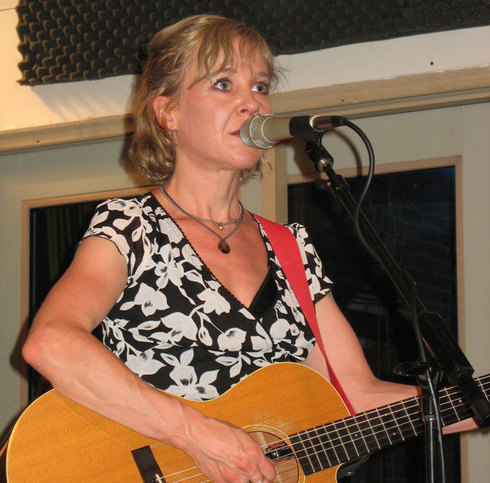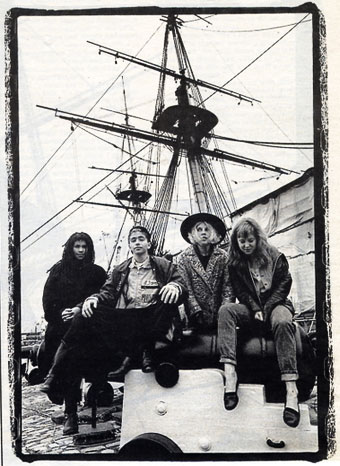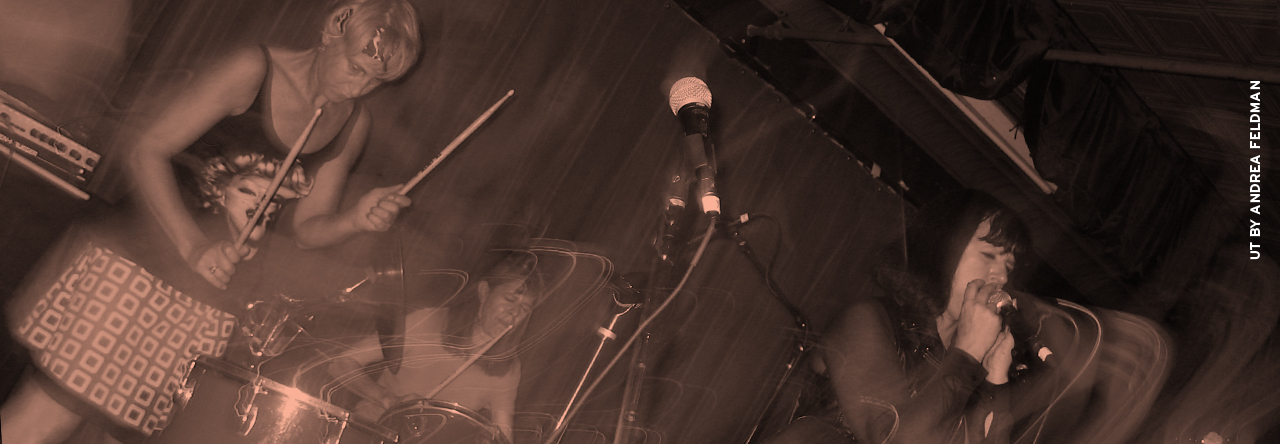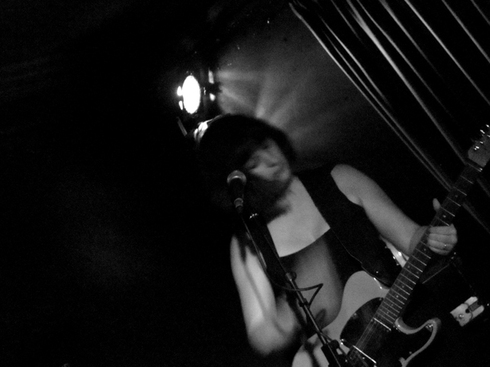
Kristin Hersh will be performing in Providence, RI tonight, Wednesday, November 10 at 7pm at the Knight Memorial Library,75 Elmwood Avenue, Providence, RI 02907. She will be reading from her fantastic new memoir, Rat Girl(Penguin Books), signing books and even playing a few songs. This event is free and open to the public. More info can be found here.
Rat Girls and Wolves
Kristin Hersh has always been a fearless performer, but never moreso than in her new memoir, Rat Girl, which recounts a single momentous year when she was diagnosed as bipolar, found success with her band, Throwing Muses, and discovered she was pregnant.
In a weird way, Rat Girl is a love story. Not in any conventional sense of the word, of course — in fact, the father of Hersh’s baby is explained away in one sentence: “Some boys like little rat girls. Not many, but a few. I’ve always been grateful for the ones that did. Now I’m not so sure.”
This love runs deeper; its fierce light suffuses the book with a kind of purity: of music, of friendship, and of believing in something so strongly that it reorders the world. It’s about creating your own kind of family, your own tribe.
Hersh’s tribe of fierce protectors includes her loyal bandmates: There’s Tea, K’s stepsister and best friend; Leslie, the zen bassist; and Dave, drummer extraordinaire and maker of wry quips. (Intent on a “girls rock” angle, myopic journalists often refer to him as the “token boy.”)
Beautiful Old Betty
Then there’s Beautiful Old Betty: erstwhile starlet Betty Hutton, hiding out incognito in Newport —or as incognito as you can get as a six-foot tall, gray haired dynamo in rhinestone-encrusted cowboy boots. They make a supremely odd couple, tiny Kristin and the sparkling Amazon with the glittering, sad past.
It’s Betty who is Kristin’s mentor, co-conspirator and soul mate. She goes to every Muses show (with her priest in tow). And she gives Hersh skewed but sage advice, forged by years of hard living in Hollywood: “Krissy,” she always begins (no-one else calls Kristin “Krissy”), “Work plus salesmanship equals sucess!” Or, more soberly, “Once you see your shadow, you’ll realize that the rest of your life will be spent staring it down, but you know what? You can do it.”
 And there are a lot of shadows in Kristin’s life: Rat Girl depicts a world of constantly shifting boundaries, of a sense of self in dangerous flux. (Early on, Hersh describes herself as a “tiny rat girl with spirals for eyes.”)
And there are a lot of shadows in Kristin’s life: Rat Girl depicts a world of constantly shifting boundaries, of a sense of self in dangerous flux. (Early on, Hersh describes herself as a “tiny rat girl with spirals for eyes.”)
We follow, like Alice down the rabbit hole, as she negotiates the spiraling ups and downs of her manic state, which is characterized by sleeplessness, hallucinatory spells and frantic bursts of songwriting.
Hersh traces her mania to a 1983 accident when she was hit by a car. Sustaining a double concussion, she develops altered perception, a kind of sound synesthesia. “I’m not writing songs anymore… They’re writing me.” Where songs had previously been benign entities, they now grab hold of her and won’t let go until she wrestles them into a form. Ambient noise turns into bursts of color, gradually taking song shape.
Music as a Saving Grace
It takes a toll. There’s a suicide attempt (described as trying to “bleed out the noise”). Doctors prescribe various drug cocktails, which make her hands shake and muffle the world, blotting out the songs. “What’s left? What’s ‘me’? Anything?” she asks.
And then she discovers she’s pregnant.
Recounted casually, the plot could turn melodramatic —or worse: soap operatic. And yet, it’s a testament to Hersh’s gifts as a writer that it’s never mawkish. She has an uncanny ability to render the most abstract, difficult to grasp aspects of mental illness in clear, vivid strokes. She writes with gusto, warmth and, above all, humor. Even at her darkest hour, Hersh never wallows. (And, if she ever skates close, Betty is there with a quip and some thoroughly unsentimental advice.)
Rat Girl is filled with upheaval and darkness, but it’s not a grim book. (It’s a damn funny book, in point of fact.) And it doesn’t give anything away to say that the book’s happy ending rests, in part, on Hersh finding a kind-of hard-won equilibrium in her life.
In the end, music is her saving grace, a seriously double-edged way of sorting through the chaos: “The song heat would be unbearable if it weren’t so enthralling, like lying in the middle of the street in the middle of summer, enveloped in a calm danger.”
***
To accompany the book, Throwing Muses are releasing “The Season Sessions,” a quarterly project where they’re recording all the songs mentioned in Rat Girl, one for each season. Here we have “Devil’s Roof” from the Fall session. More info about Throwing Muses’ latest projects over at Cash Music.
![]() Throwing Muses, “Devil’s Roof” (from The Season Sessions , Fall 2010)
Throwing Muses, “Devil’s Roof” (from The Season Sessions , Fall 2010)
KH LIVE PHOTO BY ANDREA FELDMAN | THROWING MUSES PHOTO © IAN T. TILTON (FROM SOUNDS, 1989)


